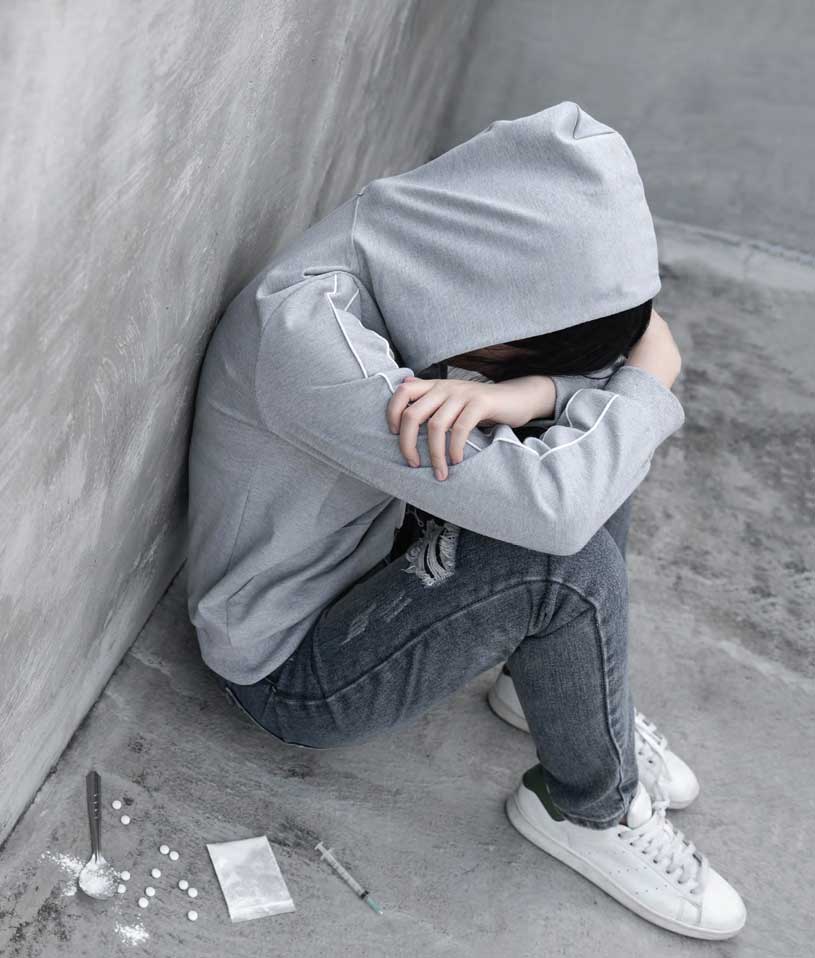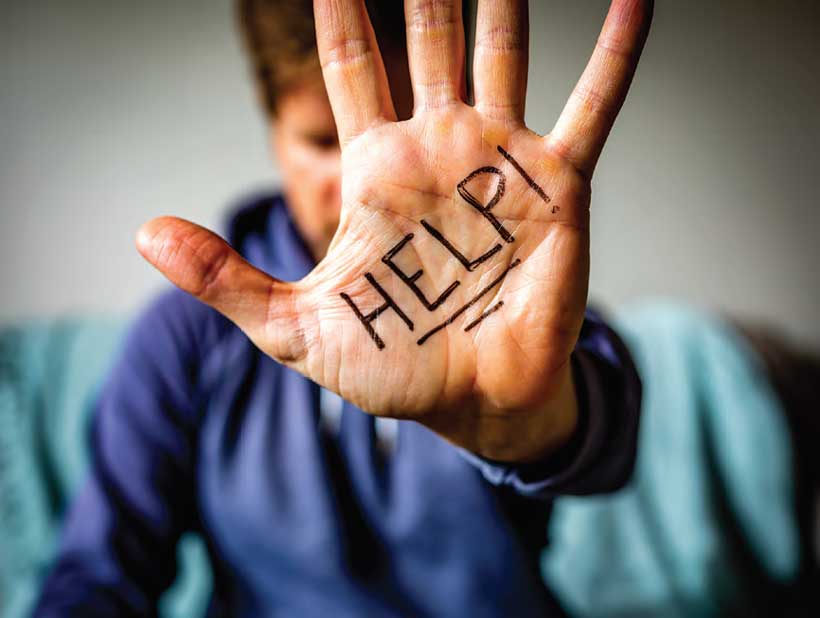

Our communities in crisis: the opioid drug menace that has moved in next door.
In times of crisis, Canadian communities turn to experts. In the case of the COVID-19 pandemic, the experts have been virologists and leaders in public health. In the “shadow pandemic” – the opioid poisoning crisis – the experts are the drug users themselves, and the people trying to keep them alive.
Fact: in 2020, drug poisoning deaths were happening every 49 minutes in Canada. Maclean’s
Mark is an expert on both counts. He knows nearly 20 people who have died from toxic drug poisoning – also known as overdose – in the past year. Two were such close friends that it’s hard for him to talk about it; still harder to believe that they’re gone. Their deaths are counted among tens of thousands across Canada, victims of a staggering public health emergency that predates COVID and has increased precipitously since the pandemic set in. The victims are not faceless, shadowy recluses, out of sight and mind. They are our friends, our co-workers. They are our neighbours.
Mark is a 49-year-old with closely trimmed hair and a goatee. On the afternoon he shared his story, he was wearing a red golf shirt and had paint on his knuckles from priming the kitchen in his house earlier in the day. Mark grew up in Camborne and lives within walking distance of the high school he attended, then called CDCI East, where he played hockey and excelled on the wrestling team, competing at the all-Ontario levels. After graduation, he went to college to become a chef and ran kitchens at high-end wineries in Niagara. For years, he worked at a flourishing restaurant in downtown Cobourg, well known for its beautiful backyard patio.
And then one day, he burned himself badly at work. He was prescribed opioids for his recovery from the injury. And for nearly 25 years Mark has navigated a dependence, first on the opioids prescribed as pain medication, then on illicit opioids to manage the same pain, and eventually, on fentanyl.
“COVID came along and everything just kind of went sideways. We were more sick.”
Mark, Recovering User
For people who rely on drugs daily, the physical withdrawal symptoms, known as dope sickness, are devastating, and quickly become the motivating factor for continuing to use. The challenges presented by drug prohibition mean that users spend a lot of time, money and energy meeting their own immediate needs – including the drugs that keep them well. As Joyce Lichtenberger, an outreach worker with Port Hope’s Green Wood Coalition, put it simply:
For most regular drug users, “there is no party.”
Navigating this life has been difficult for people like Mark for years. But the pandemic made things worse. “COVID came along and everything just kind of went sideways,” Mark says. “Everything was just harder to find, more expensive. We were more sick.”
He wasn’t alone. Across Canada, public health officials have found the pandemic has reduced access to harm reduction and addiction services, increased stress and isolation, and made the drug supply dangerously toxic.
Missy McLean is a director with national advocacy group Moms Stop the Harm, a network of Canadian families impacted by substance use-related harms and deaths. The group offers peer support for people who have lost loved ones and advocates for better solutions. A married mother of young kids, based in Cobourg, Missy has loved ones who use drugs.
Missy explains, “Because the pandemic restrictions interrupted the illicit drug supply, the networks that circulate the drugs have to get more ‘creative’ for how they maintain enough supply for the demand. That’s where we see drugs being cut more and more with deadly chemicals and different synthetics.”
WHAT IS A SYNTHETIC OPIATE?
Fentanyl is one of those synthetic opiates, first invented in 1960, and often used in surgeries or to treat severe pain in cancer patients. Fentanyl’s less common counterpart, carfentanil, is so potent its intended use is as a tranquilizer for large animals, like elephants.
Unlike heroin or cocaine, these synthetic drugs can be made domestically, so they don’t have to be transported across borders; they require less labour along the supply chain and are not subject to the vagaries of the growing season or the climate. These are drugs custom tailored to the requirements of our time. And they are deadly.
Opiates work by activating certain receptors in the nerve cells throughout the body, including the brain, disrupting the experience of pain. The danger comes when those receptors are activated in the cells of the brain stem, which is responsible for the automatic function of breathing. When the brain stem is impacted, a person’s breathing slows and becomes shallow, oxygen intake is impacted, and without rapid medical intervention, they can die. That’s what happens with an overdose – particularly when the supply is unpredictably potent, or tainted, as it is now in Ontario.
In 2016, an article in Watershed about the rise of pharmaceutical opioid drug problems reported that every 14 hours, one Canadian was dying of opioid-related causes. In 2020, Maclean’s reported drug poisoning deaths were now happening every 49 minutes. It’s not just daily drug users who are affected – all facets of the illicit drug supply are tainted such that occasional users, weekend partiers, and those seeking stimulants are being harmed as well. And it’s not just an urban issue: the rate of deaths from opioids is actually higher in both Hastings Prince Edward (HPE) and Haliburton Kawartha Pine Ridge (HKPR) health units than the provincial average.
“The hopelessness of the housing situation is definitely adding to the strength of people’s addictions.”
Dr. Piotr Oglaza
Mark knows the scope of the problem personally. He wants to stop using drugs, and he has started by trying to reduce how much he uses, and how often, balancing his will to get off the drug with the struggle to cope with the dope sickness. He says he does consider the risk of death sometimes when he uses, wondering, “Will this be the last time?”
He overdosed recently, going down on his front lawn, and was brought back from the brink by a friend who administered a dose of naloxone, a nasal spray sometimes known by the brand name Narcan, that works as a temporary antidote to opiate poisoning by helping to restore breathing in a few minutes following an opioid overdose. Mark says he has personally saved more than 20 people from overdoses in the same way.
A LARGE IMPACT ON A SMALL COMMUNITY
Although Georgia (not her real name) is currently experiencing homelessness, she has stayed at the same rented house where Mark lives. Over the past few months, she says her boyfriend has used naloxone to save people from overdose 17 times.
“This community of Cobourg is so small. Seventeen people, seventeen lives, is huge,” she says.
People who use drugs are the most frequent first responders to drug poisoning. This eye-opening fact has led health officials across the country, including those locally, to make “Don’t Use Alone” a rallying cry. Witnessing and responding to a drug poisoning is a traumatic experience every time, but Georgia says the community she’s found helps each other feel safe. It’s life-and-death more than warm and fuzzy, but it makes a difference.
“The first thing people do when they walk in, is check on each other,” she says. “What colour their face is, how shallow their breath is. I check someone’s pulse at least once a day.”
Across Canada, public health officials have found the pandemic has reduced access to harm reduction and addiction services, increased stress and isolation, and made the drug supply dangerously toxic.
That level of care and mutual support can be harder to find for those who lack proper housing. Homelessness is increasing alongside both the pandemic and the drug poisoning crisis, and research has proven unhoused people who use drugs are at even greater risk of harm and death. Georgia grew up in Northumberland and has raised her children here. She and her partner have spent months sleeping in their car and relying on friends to share access to washrooms and kitchens. When friends are evicted, or when police or fire safety officials intervene in shared living spaces, the community gets displaced and scattered, and the people who were supporting each other are forced to try to rebuild new communities and patterns of use. Each time, some fall through the cracks.
As real estate demand has soared throughout the Watershed region, affordable rentals have become almost non-existent. Much of the public health advice – to test drugs before using, to try a small dose, to use with friends, to have naloxone on site – becomes harder to implement while sleeping rough, or in public spaces, without a community of support.
Joyce Lichtenberg, who has seen first-hand how homelessness can discourage and demotivate someone, is disheartened that rather than helping people to find stable housing, the help she can offer is reduced to handing out toilet paper and gift cards to someone living under a tarp, or buying gas for someone living in their car. Meanwhile, the people she’s connecting with are feeling that something as basic as having a roof over their head is unimaginable – and recovery from drug use becomes less of a priority.
“With less hope for the future, there’s just less incentive to give up on the one thing that gives you some sort of relief,” she says. The way the price of housing and availability has exploded, there’s a feeling that society has moved on. “This society just keeps spitting out homeless people.”
In the health region of Hastings Prince Edward, Medical Officer of Health Dr. Piotr Oglaza sees the same relationship between the intersecting crises of housing and drug harms. “I believe that the hopelessness of the housing situation is definitely adding to the strength of people’s addictions,” he says. “It almost feels like ‘what is the point of doing all that work when I’m still not going to be okay?’”
Fact: 87% of accidental apparent opioid toxicity deaths in 2021 involved fentanyl. Health Canada
STIGMATIZING ADDICTION
Added to the combined forces of the pandemic, the drug poisoning crisis, and homelessness is the harm often caused by public opinion. Dr. Oglaza sees substance abuse as a health condition, one often triggered by trauma or adverse childhood experiences. Misunderstanding and stigmatizing this particular health condition can have deadly results by pushing people to use alone, or people without housing to hide or to rush while using drugs outdoors. It can also discourage people from seeking help.
Criminalization and drug prohibition effectively turn stigma into policy, framing drug use as a moral rather than a health issue. Drug prohibition raises the stakes for accessing drugs, requiring more potent doses in smaller packages. Arrests destabilize people’s lives, including their access to housing, and stints in jail lead to altered drug tolerance, making users more susceptible to poisoning after release. “We want to make sure the use of the criminal justice system isn’t putting people at even more disadvantage, which we see when they’re really suffering from a health condition, and perhaps putting them into a criminal situation doesn’t serve that health condition,” Dr. Oglaza says.
THE FOUR PILLARS
Throughout the region’s health units, the official strategy for addressing the harms of substance use is an internationally recognized approach called the Four Pillars: prevention, harm reduction, treatment, and enforcement.
The first pillar, prevention, is often considered at a higher level of political intervention, including education and access to changes in material conditions like housing and health care. What would it take for someone not to use drugs?
The second pillar, harm reduction, includes programs through the health units and other agencies that aim to make life safer for people who use drugs. Needle exchange and disposal programs, and safe use sites are examples of harm reduction. Experts in this field, including Missy McLean from Moms Stop the Harm, are also calling for a regulated, safe drug supply: accessible pharmaceutical alternatives to street supply, where the dose can be reliably known and the drugs are unadulterated.
“Access to a safe supply program has a huge impact on opening people up to all of the different supports and services, whether that be treatment or housing or trauma work that they might want to access,” she says.
The third pillar, treatment, includes withdrawal management or detox, residential beds, and may focus on abstinence or recovery efforts. Chronically underfunded and in demand, treatment beds are often far from home, tremendously expensive, and come with long wait times. More than one person interviewed for this story said the reality is nothing like the TV show, Intervention, where someone agrees to treatment while a van waits to take them to rehab.
Missy notes, “Treatment and recovery often means waiting for a bed for three months, and does nothing to keep someone alive who has to access a toxic drug supply today.”
Georgia says most of the people she knows who use drugs are interested in getting better. She says those seeking treatments closer to home, such as methadone, are often hampered by mundane but very real challenges, such as the short hours the clinics are available or finding transportation to get a daily dose.
The final pillar, enforcement, is the role of policing and the criminal justice system. Police, like other first responders, have been relied upon to face the brunt of this crisis, and haven’t always had proper tools for responding. Often, prohibitive laws and a punitive criminal justice system are at odds with best practices – and with the other three pillars.
In mid-October, HKPR Board of Health endorsed a position statement supporting decriminalization of simple possession, a move that followed a similar motion from the Town of Cobourg and a memo from the Canadian government encouraging prosecutors to seek alternatives to criminal prosecution for simple drug possession. It’s yet to be seen what the role of policing might look like in a local community where decriminalization becomes a reality beyond boardrooms.
“KEEPING PEOPLE ALIVE”
The four pillars have been implemented in communities around the world, and the rollout of the strategy has differed widely. In Switzerland, for example, a sincere commitment to truly supporting all four pillars has led to dramatic improvements in drug harms. In most Canadian contexts, the four pillars have not been given anything close to equal support – or equal funding. But unless prevention, harm reduction and treatment are emphasized, the reality is grim: drug poisoning deaths keep adding up.
Missy puts it with a hard-won bluntness that comes from love, experience, and desperation: “Dead people don’t recover. Dead people don’t access treatment. The most important piece has to be about keeping people alive today to access things down the road if they want it.”
On both the systemic level – represented by political will – and the personal level, stigma, moral judgment plus a sense of being left behind get in the way of real progress.
“In terms of having some hope, and having some strength to get through, feeling like you matter is probably number one,” Joyce Lichtenberg says. “Stop making people feel like they don’t matter or they’re invisible.”
Dr. Oglaza says it’s important for citizens to know that the beliefs they hold and the actions they take have an impact in their community. He notes that people who use drugs may feel the community around them is looking at them differently and suggests approaching those individuals with compassion and solutions instead of judgment. “Playing the small part each of us may play in this could have a big impact.”
This is not a story about death; it’s a story about life. It’s about all the many untold details of the lives that would otherwise have been lived, if not cut short unnecessarily by a toxic drug supply. It’s about people who have endured physical pain, unimaginable loss, and horrific experience, and coped, surviving to the best of their abilities. And it’s not a story about distant strangers; it’s a story about family members, friends and neighbours. It’s about powerful love, and people who check in on each other.
Like the pandemic, the drug poisoning crisis isn’t just an individual problem, or simply a medical problem. And like the pandemic, the solutions involve all of us: in our neighbourhoods, our homes and ourselves.
Story by:
Meghan Sheffield


